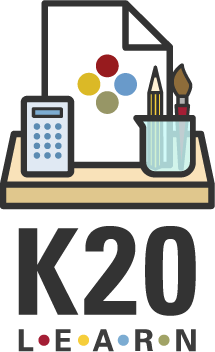Summary
How can we better support shared decision-making and build buy-in as a community? Building relationships and encouraging group engagement are vital skills for student and teacher learning communities alike. This collection includes strategies for many communication and learning purposes that can be used to help to build consensus, to engage in shared decision-making, and to inspire collaborative action.Resources

Driving Question Board
- Preschool - Secondary
This strategy encourages students to share their questions and observations about anchoring phenomena. By sharing their thoughts throughout the learning experience, students can connect personally and culturally to the content. Read more »
- Whole Class
- Engage/Opening, Explore/Learning Activity, Explain/Closing, Extend/Additional Learning Activity, Evaluate/Assessment
- More Than 30 Minutes
- Activate Prior Knowledge, Analyze, Brainstorming, Collaborate, Conversation Starter, Critical Thinking, Cross-Curricular, Infer, Interpret, Organize, Problem Solving, Speak & Listen, Synthesize
- Preschool - Secondary

Affinity Process
- 6th - 12th
This strategy engages students in organizing ideas into themes to summarize content or find points of agreement. Students respond to a prompt and work in groups to organize the responses into themes. Read more »
- Individual, Whole Class
- Engage/Opening, Explain/Closing, Evaluate/Assessment
- Less Than 10 Minutes, 10 - 20 Minutes
- Activate Prior Knowledge, Brainstorming, Collaborate, Organize, Review, Student Choice
- 6th - 12th

8-Up
- 5th - Secondary
This collaborative strategy can be used to help a whole class or large groups come to a consensus of agreed upon ideas. 8-Up makes it possible for all students' ideas to be considered. Read more »
- Large Group (at least 30), Medium Group (at least 10), Whole Class
- Explore/Learning Activity, Extend/Additional Learning Activity, Evaluate/Assessment
- 10 - 20 Minutes, 20 - 30 Minutes
- Collaborate, Organize, Persuade, Problem Solving
- 5th - Secondary

Cooperative Processing
- 1st - Secondary
This process is helpful for shared decision-making. The structure enables all voices to be heard and considered in the decision-making process. Read more »
- Large Group (at least 30), Medium Group (at least 10)
- Brainstorming, Collaborate, Elaborate, Problem Solving, Speak & Listen, Synthesize
- 1st - Secondary

Democratic Voting
- 6th - 12th
This strategy outlines steps for class voting that allow all student and teacher ideas to be addressed with equity. Students come to a group consensus by voting for their top choice or choices. Read more »
- Whole Class
- Explore/Learning Activity, Explain/Closing, Extend/Additional Learning Activity, Evaluate/Assessment
- More Than 30 Minutes
- Brainstorming, Collaborate, Organize, Problem Solving, Speak & Listen, Student Choice
- 6th - 12th

I Think / We Think
- 6th - 12th
This strategy can be used in a variety of ways to encourage students to think about and list their individual ideas on a topic and to record common ideas that surface during group share-out and discussion. Read more »
- Whole Class
- Engage/Opening, Explore/Learning Activity, Explain/Closing
- 20 - 30 Minutes
- Activate Prior Knowledge, Brainstorming, Collaborate, Organize, Present, Reason, Speak & Listen, Student Choice, Summarize
- 6th - 12th

Sticky Bars
- Preschool - 12th
This strategy quickly assesses students’ ideas concerning a concept or question and can be used as either formative or summative assessment (but is most appropriate for a formative assessment). Sticky Bars helps students see that there is often a range of opinions concerning a concept. Read more »
- Individual, Whole Class
- Engage/Opening, Explain/Closing, Evaluate/Assessment
- Less Than 10 Minutes
- Activate Prior Knowledge, Analyze, Conversation Starter, Critical Thinking, Identify, Interpret, Physical Movement, Review, Self-assessment, Student Choice
- Preschool - 12th
This work is licensed under a Creative Commons CC BY-SA 4.0 License.
Report copyright infringement »

